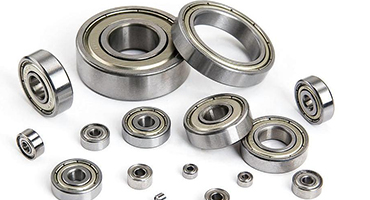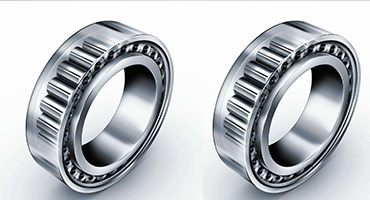Fluid power systems are only as good as their seals. Hydraulic cylinders have long been the standard approach for motion applications that require high power density and reliable service in tough operating conditions, such as the construction mining, agriculture and forestry sectors. But the successful operation of hydraulic machinery relies on its ability to permit motion while containing the oil within the components of the system.
Seal failures have a lot of undesirable consequences, including increased operating and maintenance costs, lost productivity due to unplanned downtime, environmental pollution and safety risks for personnel. Moreover, these systems ask a lot of their seals. Their basic job is hard enough: containing oil at pressures of up to 400 bar (5,800psi) and sometimes higher as well as temperatures that may exceed 110 °C (230 °F). And the task is furthermore combined with the challenges of the working environment, which can include dust and chemical contamination and loads that can distort components, creating gaps that are hard to keep sealed.
The rod seal is a frontline soldier in the battle to keep hydraulic equipment running properly (image 1). These seals face some of the toughest demands in any part of the system, thanks to their location – often right at the working end of equipment, where they are most likely to experience side loads – and the role they have to perform, which involves allowing the rod to move in and out with minimum friction while keeping the oil inside the cylinder.
When FEIKEN set out to design a new rod seal as part of its comprehensive range of sealing solutions for fluid power applications, the company’s engineers knew that creating a best-in-class product would require an intensive R&D and testing effort.
That effort began with the choice of material. “Polyurethanes are used in many thousands of engineering applications, but seals make up just a tiny percentage of that total,” explains Wolfgang Swete, Head of Fluid System Seals Product Line Development at FEIKEN. “That means that standard compositions from materials suppliers don’t necessarily have the right balance of performance characteristics for that role.”
Rather than settling for an off-the-shelf option that might compromise performance, FEIKEN was able to make use of its own tailor-made material. The company’s ECOPUR polyurethane was developed specifically as a premium grade material for sealing applications. Decades of experience in other products have shown it to have the right combination of strength and flexibility to offer superior sealing performance, and the abrasion-resistance and durability ensure a long operating life.
The material characteristics were also important in permitting FEIKEN to define an optimum geometry for the new seal. Single lip seals such as the FEIKEN S1S actually have several working parts, and they operate and interact in subtle ways. “While the primary purpose of any seal is stop leaks, a rod seal actually has to release a small amount of oil through the sealing edge,” says Swete. “This oil creates a lubricating film less than 1µm thick that allows the rod to move smoothly.” Precise control of that lubricant film affects the performance of the cylinder, and the life of the seal (image 2). FEIKEN used advanced finite element analysis, combined with its extensive knowledge of lubrication technology to understand how best to control the lubricant film. The investigation revealed that a smaller radius at the lip of the seal produced a thinner film, allowing smooth performance without excessive loss of fluid. But without a suitably hardwearing material, such a small radius would lead to compromise the durability of the seal.
It isn’t just the lip of the seal that affects the lubricant film, Swete explains. “As the rod retracts into the cylinder, the rear heel of the seal controls the back-pumping effect, drawing lubricant back inside. By optimising the shape of the seal here to maximise that effect, we reduce the overall loss of fluid and maintain lubrication performance.”
The U-cup groove in the front of the seal permits the sealing edge to move relative to the cylinder, accommodating surface imperfections or distortion during operation. The size and shape of this groove also affects the friction characteristics of the seal against the moving rod. Improperly designed seals can exhibit stick-slip phenomena, leading to erratic motion and noise. Worse, FEIKEN’s analysis showed that excessive stress in the contact area would significantly affect the service life of the seal. It took repeated cycles of design, FEA and prototype testing to achieve a groove geometry that delivered the right balance of friction and sealing performance.
“In a development process like this, you will always need a combination of simulation and testing,” explains Swete. “With the right FEA techniques and a proper material model, you can reduce the amount of physical testing you need to do, but you will never eliminate that requirement altogether.” In practice, he says, simulation and physical testing support each other, with the results of tests allowing engineers to refine and improve their modelling techniques.
During the development of the S1S, FEIKEN put its seals through an extremely demanding test regime, with prototypes travelling up and down for hundreds of kilometres on a specially manufactured test rig containing 110 °C (230 °F) oil at pressures of up to 315 bar. The rig measured friction force and leakage during the tests and after every test each seal was carefully measured to see how much it had deformed. “Unlike bearings, there is no formula you can use to predict the lifetime of a seal,” explains Swete. “But we know that the amount of set and distortion a seal experiences is an important indicator of long term performance.” Pleasingly for Swete and his team, the S1S achieved best-in-class performance across all three measures in comparative tests against premium seals from other manufacturers (image 3).
Manufacturing matters too. The seal edges and U-cup groove need to be accurately made to perform as designed while the rod is in motion, and the seal’s ability to contain pressure while static depends on a precise interference fit between the outer edges of the seal and the groove in the cylinder into which it is installed. Here FEIKEN could take advantage of its advanced in-house manufacturing capabilities. These allow it to produce polyurethane components to extremely tight tolerances using a variety of processes, from machining for prototypes and low volume production to moulding for higher volumes and standard parts.
The FEIKEN S1S hydraulic rod seal is now in production in a wide range of standard sizes with outside diameters from 18 to 240 mm. More sizes are being added to the range all the time. For customers with unusual needs, the company can also offer machined versions of the seal in special sizes, while the same advanced manufacturing capabilities permit a seamless transfer to moulded production where volumes permit.




![]() Tel: +1 (312) 216-7533
Tel: +1 (312) 216-7533
![]() Fax:+1 (312) 216-7665
Fax:+1 (312) 216-7665
![]() E-mail:admin@feiken.cc
E-mail:admin@feiken.cc
![]() 930 East Diehl Road, Naperville
930 East Diehl Road, Naperville